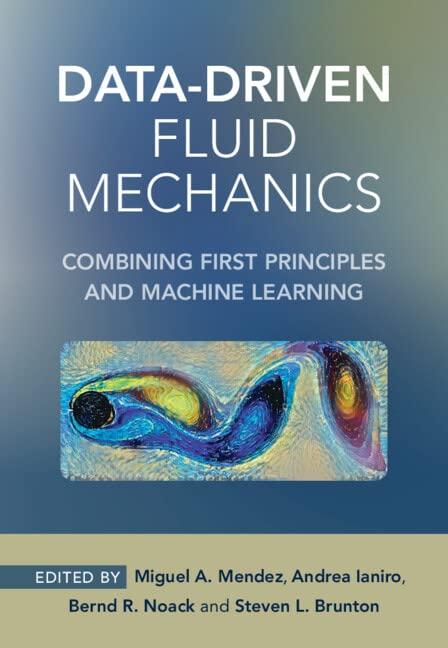Question
For a batch reactor with constant volume operated isothermally, derive the expression for the concentration of the limiting reactant and its conversion as a function
For a batch reactor with constant volume operated isothermally, derive the expression for the concentration of the limiting reactant and its conversion as a function of reaction time when the reaction involved follows the following rate law:

Irreversible nth-Order Reactions
Homogeneous Catalyzed First-Order Reaction Autocatalytic Reactions (A+R R+R)
Irreversible Reactions in Parallel (A R and A S) Irreversible Reactions in Series (A R S) First-Order Reversible Reactions Second-Order Reversible Reactions Reactions of Shifting Order
Plss HELP ASAPP THANK YOU, WILL GIVE THUMBS UP
1. For a batch reactor with constant volume operated isothermally, derive the expression for the concentration of the limiting reactant and its conversion as a function of reaction time when the reaction involved follows the following rate law: - Irreversible Zero-Order Reactions - Irreversible Unimolecular First-Order Reactions - Irreversible Bimolecular Second-Order Reactions (A+B Products) - Irreversible Bimolecular Second-Order Reactions (2A Products) - Irreversible Second-Order Reactions (A+2B Products) 6- Irreversible Trimolecular Third-Order Reactions (A+B+D Products) 7 - Irreversible Trimolecular Third-Order Reactions (A+2B Products) \& Irreversible Third-Order Reactions (A+B Products) - lrreversible nth-Order Reactions - Homogeneous Catalyzed First-Order Reaction - Autocatalytic Reactions (A+RR+R) - Irreversible Reactions in Parallel (AR and AS) - Irreversible Reactions in Series (ARS) - First-Order Reversible Reactions - Second-Order Reversible Reactions - Reactions of Shifting Order 2. For a batch reactor with varying volume operated under constant pressure and temperature, derive the expression for conversion of the limiting reactant and the reaction volume as a function of reaction time when the reaction involved follows the following rate law: - Irreversible Zero-Order Reactions - Irreversible Unimolecular First-Order Reactions - Irreversible Second Order Reactions (2A Products or A+B Products ;CA0=CB0) 3. For flow reactors (CSTR and PFR) with either A=0 or A=0, derive corresponding performance equations for calculating the residence time () as a function of concentration and/or conversion when the reaction involved follows the following rate law: rA=k - rA=kCA - rA=kCA2 - AR;n=1;CR0=0 1. For a batch reactor with constant volume operated isothermally, derive the expression for the concentration of the limiting reactant and its conversion as a function of reaction time when the reaction involved follows the following rate law: - Irreversible Zero-Order Reactions - Irreversible Unimolecular First-Order Reactions - Irreversible Bimolecular Second-Order Reactions (A+B Products) - Irreversible Bimolecular Second-Order Reactions (2A Products) - Irreversible Second-Order Reactions (A+2B Products) 6- Irreversible Trimolecular Third-Order Reactions (A+B+D Products) 7 - Irreversible Trimolecular Third-Order Reactions (A+2B Products) \& Irreversible Third-Order Reactions (A+B Products) - lrreversible nth-Order Reactions - Homogeneous Catalyzed First-Order Reaction - Autocatalytic Reactions (A+RR+R) - Irreversible Reactions in Parallel (AR and AS) - Irreversible Reactions in Series (ARS) - First-Order Reversible Reactions - Second-Order Reversible Reactions - Reactions of Shifting Order 2. For a batch reactor with varying volume operated under constant pressure and temperature, derive the expression for conversion of the limiting reactant and the reaction volume as a function of reaction time when the reaction involved follows the following rate law: - Irreversible Zero-Order Reactions - Irreversible Unimolecular First-Order Reactions - Irreversible Second Order Reactions (2A Products or A+B Products ;CA0=CB0) 3. For flow reactors (CSTR and PFR) with either A=0 or A=0, derive corresponding performance equations for calculating the residence time () as a function of concentration and/or conversion when the reaction involved follows the following rate law: rA=k - rA=kCA - rA=kCA2 - AR;n=1;CR0=0Step by Step Solution
There are 3 Steps involved in it
Step: 1

Get Instant Access to Expert-Tailored Solutions
See step-by-step solutions with expert insights and AI powered tools for academic success
Step: 2

Step: 3

Ace Your Homework with AI
Get the answers you need in no time with our AI-driven, step-by-step assistance
Get Started


